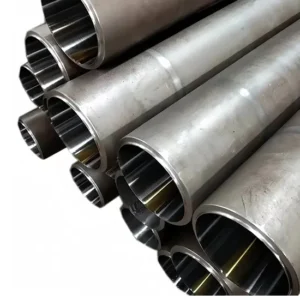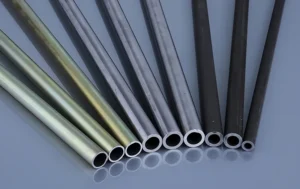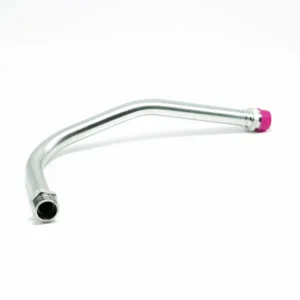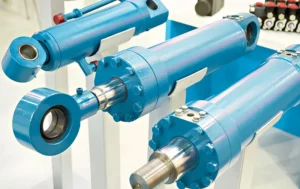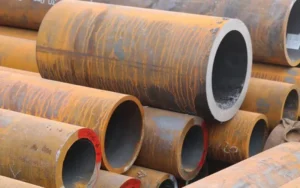Ever struggled with hydraulic system failures? In the past two decades of experience, I have noticed that 60% of hydraulic system failures are caused by cutting corners in fluid delivery pipes. The right hydraulic pipe is more than just a component.

What is a hydraulic pipes? Hydraulic pipes are carriers for conveying hydraulic oil and precision power transmission. They are usually made of seamless precision steel pipes and can withstand high-pressure environments. They mainly connect pumps, valves, cylinders, actuators, etc.
Twenty years of experience in the industry has taught me the importance of pipelines in hydraulic systems. No matter how advanced the hydraulic cylinders, valves and pumps are, their performance is limited by the hydraulic pipes.
As cardiovascular experts often say: “Your life depends on the most fragile blood vessel.” Hydraulic pipes are similar to blood vessels in the human body, and the same is true in the hydraulic field. The pipelines in the hydraulic system are not supporting roles, but determine the success or failure of the system.
What Type of Pipe is Used for Hydraulics?
If you have ever seen a hydraulic system malfunction due to not selecting the correct pipeline.I have seen entire production lines shut down because someone used the wrong pipe material.
The main use of hydraulic system pipelines should be seamless structural pipes. Among them, cold drawn carbon steel pipes are the most popular. Compared to welded pipes, seamless structures are more stable and safe. Although welded pipes are relatively inexpensive, the welded ends are prone to cracking under high pressure, posing a safety hazard.
In 2018, I visited a small machinery manufacturer in Vietnam. They used hydraulic pipes with mismatched materials. After half a month of use, the fittings burst, causing dangerous leaks and expensive downtime. Choosing the right pipe is not only a technical issue, but also a safety and cost issue.
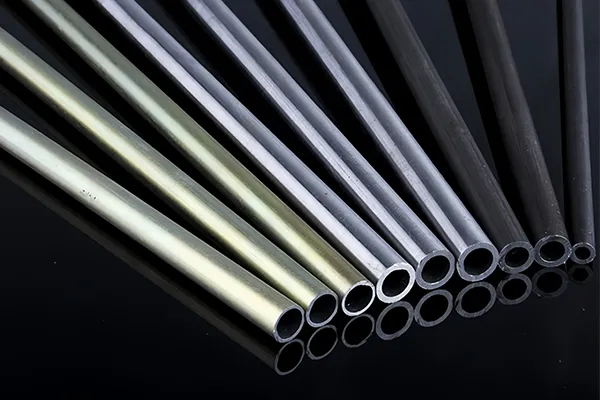
What Are 2 Types of Grades of Pipe That Can Be Used for Hydraulic Piping?
In actual applications, there are manufacturers who save money on pipes and cause equipment failures. For example, in a high-pressure application environment, a low-standard pipe is selected, causing the entire hydraulic system to fail.
There are two main grades of hydraulic pipe:
Precision cold-drawn seamless steel pipe (such as ASTM A179/A179M or EN 10305) and high-pressure hydraulic pipe (such as ASTM A519 or EN 10297).
The former provides precise dimensional consistency for standard applications, while the latter provides excellent high-pressure strength for systems above 5,000 PSI.
For example, I understand:
For agricultural machinery, most of which have a pressure below 4000 PSI, using precision cold drawn seamless tubes is sufficient. High precision tolerances ensure correct installation. A smooth inner surface can reduce resistance.
But for heavy construction equipment, it is recommended to use hydraulic pipes that are more resistant to high pressure. These pipelines require more processing steps and rigorous testing. Ensure higher precision dimensions and higher mechanical strength. They are more expensive, but they are safe to use, have a low failure rate, and can save money in the long run.
There are significant differences in the production process of pipes of different grades. Standard precision pipes are usually formed using cold drawing technology, relying on molds to stretch the metal to achieve the target size; High pressure grade pipes require more complex processing procedures, including stress relief and various heat treatment processes, in order to optimize the microstructure of the material.
Many buyers also overlook the key to positive material certification. I usually remind customers that they can request the factory to provide a factory certificate, and precision hydraulic pipes must have an IATF 16949 certificate. There are indeed many inferior products in the market, and I have seen too many counterfeit pipes with forged specifications entering the market. For example, I once had contact with a large equipment manufacturer who had to recall a batch of 50 devices due to problems with the pipes provided by the supplier during actual operation.
In addition, the environment is also a factor to consider when selecting materials. The immediate pressure requirements are not high, but if the equipment needs to be in a corrosive environment for a long time, the corrosion resistance performance needs to be improved.
What Is The Difference Between Hydraulic Hose And Pipe?
The hose versus pipe debate comes up in almost every project I consult on. Last month, a client insisted on using all pipes for a mobile excavator, then wondered why the system kept breaking down.
Hydraulic pipes are rigid metal tubes that provide maximum pressure capacity and durability for fixed applications, while hydraulic hoses are flexible conduits made from elastomers and reinforcements that allow movement between components. Pipes offer better pressure ratings and longevity, while hoses accommodate machine articulation and vibration isolation.
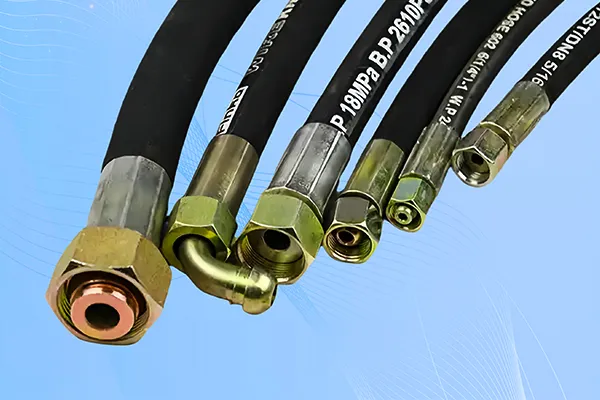
In actual hydraulic system design, the selection of hard and soft pipes needs to consider multiple factors. I have participated in hydraulic system design, from simple agricultural machinery to high load engineering equipment, and have developed a practical decision-making method.
When the system has high requirements for pressure capacity, flow stability, or service life, hard pipes are usually a better choice. Its rigid structure can maintain system sealing under high pressure, high temperature, or vibration conditions, reducing the risk of leakage. It can be understood as follows: Hydraulic hard pipes are like the main trunk of a system, providing stable and efficient channels for fluid transportation.
The hose plays the role of “moving joint” in the hydraulic system. The hose can be used as a joint to allow the various parts of the mechanical equipment to operate. For example, between a tractor and its accessories, or between the cab and the boom of an excavator. This combination with the hose can better cooperate with the mechanical equipment.
For more information on hydraulic hoses, please refer to “Hydraulic hoses explained”
In hydraulic system design, there is a significant difference in structure between pipe and hose. Standard hydraulic pipe integrated seamless steel structure. The wall thickness of the entire pipe is uniform and consistent. Hydraulic hoses are layered composite structures, typically consisting of three layers: an inner synthetic rubber tube, a middle reinforcement layer (wire braided or spiral layer), and an outer protective layer.
precision tubes can withstand higher pressures, some of which can withstand working pressures above 700 bar. Meanwhile, its smooth inner wall significantly reduces fluid resistance, minimizing energy loss and heat generation issues. The excellent thermal conductivity brought by metal materials helps to dissipate heat and cool hydraulic oil.

Of course, hoses also have their own advantages. Good flexibility enables it to effectively absorb mechanical vibrations and pressure fluctuations, protecting key components such as the pump body. In complex equipment, the flexibility advantage of hose installation is obvious, and in many cases, it supports quick on-site replacement without the need for special tools.
From decades of field experience, I’ve learned that the best systems use both components strategically. One manufacturing client reduced their equipment warranty claims by 30% after we redesigned their system to use rigid piping for main pressure lines and high-quality hoses only where flexibility was absolutely necessary.
What Is The Standard Pipe Finish For Hydraulics?
During a factory field visit, the hydraulic pipes there frequently rusted. The cause of problem is not the material, but the defects of surface treatment process. which leads to insufficient anti-pollution ability of the pipe.
The inner surface should ensure smoothness and surface roughness (<1.6um) . Ensure reduced fluid resistance. The outer surface treatment of hydraulic pipes is usually galvanized, phosphating, spray painting, and acid etching to prevent corrosion.
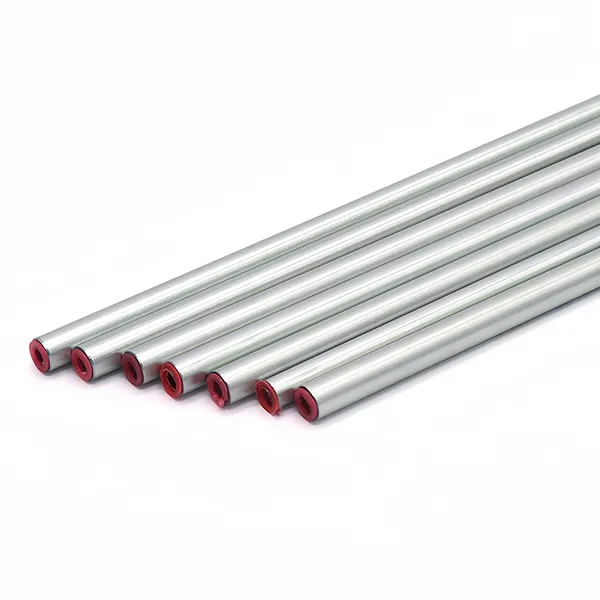
Engineers often overlook the true value of the surface treatment process of hydraulic system pipes. Even micron-level surface treatment differences can affect the reliability and performance of the entire hydraulic system.
When the inner wall treatment is not up to standard, a series of chain reactions will be triggered:
• Fluid dynamics performance deteriorates and turbulence occurs
• System energy transmission efficiency is significantly reduced
• Frictional heat accumulation causes abnormal oil temperature increase
• Microscopic surface defects become contaminant accumulation points
• The risk of localized corrosion is greatly increased
Achieving the ideal internal finish of hydraulic tubing requires a series of delicate processing steps. After drawing or rolling, high-quality hydraulic tubes undergo a rigorous cleaning process. Special pipes also need to be treated with pickling or mechanical polishing so that the inner wall can reach the best condition.
The treatment method for the outer surface of tubing should be determined according to actual needs. If it is in an indoor constant temperature environment, only simple cleaning and rust proof oil treatment are needed. This ensures storage safety and facilitates subsequent installation.
But in more severe working conditions, such as galvanizing, it is a good choice. It can better cope with general corrosive environments. If the working conditions are particularly harsh, then you have to consider epoxy resin coating.
During the precision machining process, the treatment of the pipe end is particularly critical. All incisions must be flat and square, and the edges must be thoroughly deburred. This can ensure the sealing of the connection parts and prevent contaminants from entering the pipe during assembly. I often emphasize to the team that the reliability of hydraulic systems is often reflected in the control of these details.
Conclusion
Hydraulic pipes are the heroes behind the scenes. When choosing, you need to consider the pressure level, actual working conditions and environmental conditions. Whether you choose seamless steel pipes or flexible hoses, the right material and good quality are important factors in determining the stability of the system.


